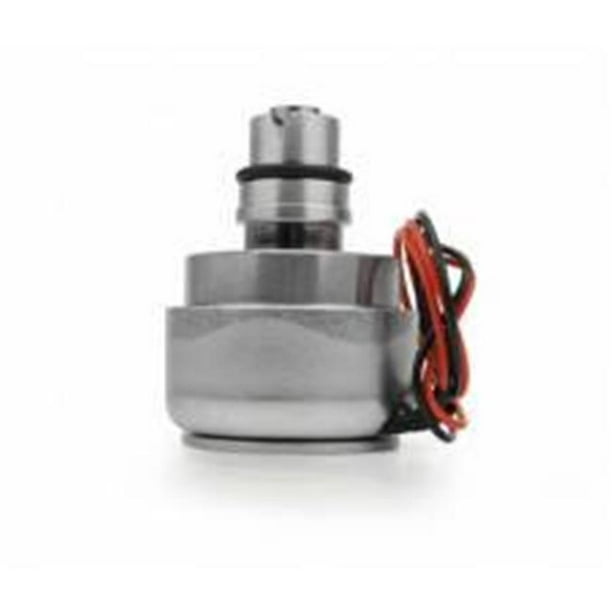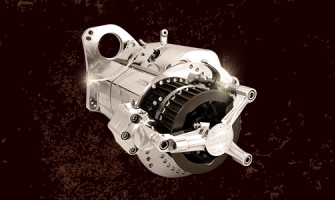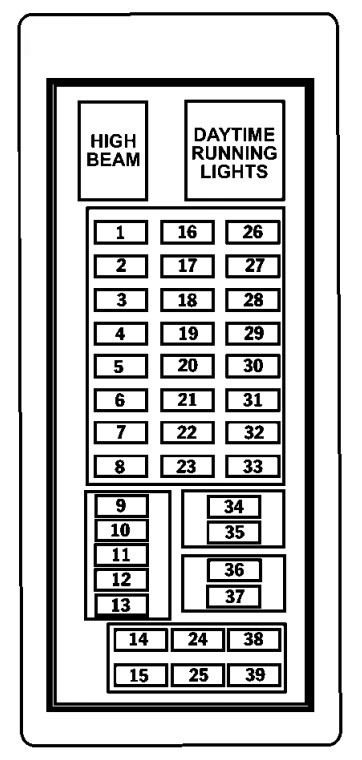The transbrake is activated by the driver by applying electric current to a solenoid at the transmission. With the transbrake engaged (transmission locked), the engine throttle can be increased to any position (opening) in preparation for launch without the race driver worrying about the car creeping forward. Powerglide Trans Brake Valve Body (Forward Shift Pattern) P-R-N-2-1 This kit should be installed by someone familiar with automatic transmission repair and assembly. We recommend following a transmission Repair Manual for disassembly and assembly. TCI's Trans-Brake functions only in low gear when Trans Brake button is activated. Our trans brake release is the fastest out there and has no creeping when staging. Developed from years racing in the gas world, we took that technology from our 727s and 904s and apply that to out 48RE billet valve bodies. Main line pressure is adjustable between 200-230 psi and is consistent.
- Transmission Bracket
- Transmission Brake Schematics
- Transmission Brake Allison 545 Transmission
- Transmission Brake Button
- Transmission Brake Button
- Transmission Brake Kit
- Transmission Brake Operation

The trans brake revolutionized drag racing automatic transmission equipped vehicles. A transmission brake allows your vehicle to launch off the line with more 'hit' to the suspension and tires. If you want the hard hitting initial move off the starting line like what you get by dumping the clutch on a manual transmission, but with the ease of use of an automatic transmission then an automatic transmission brake valve body is what you need. If you would like a further definition of what a transbrake is and how it works, please click here.
If you are looking for a manual shift valve body but do not want a trans brake, please view our manual valve body products here.

JW Performance Transmissions, Inc. builds the best quality transbrake valve bodies available. We offer their entire line of dependable, hard hitting transmission brakes. When using electronics like a delay box, you make the best use of them by using the delay box with a trans brake.
JW Performance Transmission Trans Brake Applications
| Automatic Transmission Brand and Model | Transbrake Type | Part Number | |
|---|---|---|---|
GM Powerglide TransbrakeGM = Buick, Chevy, Chevrolet, GM, General Motors, Oldsmobile, Pontiac OEM model power glide transmissions, JW Performance and other aftermarket GM based transmissions | PRO TREE Forward pattern quickest launches .400 tree | jw 10284 | |
| Bracket Race Forward pattern .500 tree | jw 10280bf | ||
| Bracket Race Reverse pattern .500 tree | jw 10281br | ||
GM Turbo 350 TH350 Trans brake | Reverse pattern | jw 20550br | |
GM Turbo 400 TH400 Transbrake | Reverse pattern | jw 30550br | |
| Reverse pattern aluminum | jw 30551br | ||
| Reverse pattern | jw 40550br | ||
| Reverse pattern | jw 60550br | ||
| Reverse pattern | jw 50550br | ||
| Reverse pattern | jw 55550br |
Q: What is a trans brake? How does a transbrake work?
A) An automatic transmission transbrake is a modified or aftermarket valve body which puts the trans into first gear, and reverse gear at the same time. This is done in part by applying electrical voltage and current to the valve body assembly. As long as power is supplied to the valve body the vehicle will not move. This allows the engine to be brought up to a higher rpm than what is possible when 'foot brake' racing. When the brake is engaged, there is no torque being applied to the driveshaft, so the suspension is also in an unloaded state. When current is removed from the brake, the reverse component of the trans is released, and torque is applied to the driveshaft very abruptly. This 'hits' the tires harder, more like what a manual transmission car does when the clutch is released. Since the transbrake is controlled by applying an electrical current, it is also the preferred method of controlling when the car launches when using delay boxes and other modern drag race electronics.
A transmission brake can be used in a street vehicle, but is most commonly used for serious drag racing.
Transmission Bracket
Before the advent of the trans-brake, racers using automatic transmissions were at the mercy of the foot brakes installed in their respective cars. The stick shift guys had a big advantage, because they just had to engage theline lock (Roll Control) to leave consistently at an engine rpm where the car worked the best.
Then the transmission brake came along.
This then-revolutionary device allowed anautomatic transmission car to consistently leave the line at a reasonably high rpm and consequently be “on the converter.” It also fixed the issue we all faced with brakes that couldn’t hold a car when staging. In short, the trans-brake evened the playing field between stick and automatic racers and truly changed drag racing forever.
When thetrans-brakecame out, there were a couple of different formats: the electric internal brake and the external CO2 setup. The pages of NHRA’s National DRAGSTER were sometimes filled with “trans-brake war” ads – manufacturers claiming their trans-brake was more consistent, more reliable, and had a quicker, faster release. While there were no clear winners at the time, you’d be hard pressed to find a CO2 brake. The electrically operated brake is the norm.
How does a trans-brake work?
Basically, it’s centered around a solenoid, or electrical valve, that fools the transmission into thinking it is in both first and reverse at the same time. This allows you to sink the gas pedal into the floor after you’ve staged the car in gear. On a sportsman tree, as the last yellow goes out, you release the trans-brake button and the transmission solenoid releases. Consequently, the car leaves the line with the engine spinning at a pre-determined rpm.
That’s the simplified version; however, there are a few things to keep in mind. If you have the tach pegged and keep it there with the brake on, converter life isn’t exactly good. Many trans-brake manufacturers actually suggest you pre-stage in 1st gear. When you’re ready to stage, move in and find your spot. Immediately press the trans-brake button but remember to keep your foot on the brake pedal. Wait for a split second in order to give the brake time to engage. As far as rpm is concerned, higher doesn’t necessarily mean better or faster.
According to the folks atRossler Transmissions, most combinations prefer to the leave off the trans-brake at between 3,000 and 5,800 rpm. Most seasoned racers will tell you to begin testing your preset launch rpm at a low rpm figure and work your way up. The ET slip will tell you what speed your car likes best. Typically, higher rpm doesn’t always equate to faster. You’ll also find that a two- or three-step rev limiter will be your friend with a setup such as this. That way, you can concentrate on driving rather than the tach.
When racing off the top bulb (for example, with a delay box or on a Pro tree), Rossler recommends that you concentrate on the top bulb only: “Once you see the top bulb flash let go of the brake button, and then hit the accelerator. By pushing the accelerator after you let go of the brake button you will save a lot of wear and tear on your torque converter, and make the transmission run a lot cooler.”
If you’re leaving on the bottom bulb, Rossler recommends you concentrate on the last yellow bulb once the car is staged and the brake is engaged:“You will see the top bulb flash with your peripheral vision. When the first light flashes, hit the accelerator and then, on the last yellow, let go of the brake button.”
How difficult is it to hook up an electric trans-brake?
Transmission Brake Schematics
When it comes to wiring up their Compu-Flow trans-brake, ATI offers these suggestions: “ATI uses the transmission case as ground, assuming most race cars use solid mounts on both engine and transmission. If by chance this is not the case in your application, be sure that your engine is grounded properly to the frame. The Compu-Flow Trans-brake draws only 1 amp when activated; therefore, an 18 gauge wire can be used as a hot lead to the external connector on the transmission case. We do recommend, however, that the 12-volt be fused for safety.”
ATIalso recommends hooking up your trans-brake in tandem with the a roll-control system: “Although not mandatory, we have found that hooking up the trans-brake in conjunction with a roll-control system allows the car to stage perfectly at any rpm. If your car does not have a roll control system in it, any quality micro-switch will do the job.”
Factors Effecting Reaction Time


A lot has been claimed in regards to reaction times with a trans-brake. Certainly, some are quicker than others, but ATI tells us there are a lot of factors that can have an influence upon reaction times. These include:
- Position the driver stages the car in relation to the racetrack timing lights
- Type of trans-brake button, its location, and when the driver releases it
- Release speed of the trans-brake
- Weight of the racecar
- Horsepower of the engine and the rpm where it produces peak torque
- Stall speed and torque multiplication characteristics of your torque converter
- Gear ratios of the transmissionand the rear-end
- Type of chassis and suspension, its setup and adjustment
- Diameter of the front tires
- Drag slick size, sidewall construction, rubber compound, age or condition, inflation pressure, and width of rims on which they are mounted
- Type and positioning of race track timing lights.
- Track surface conditions
Transmission Brake Allison 545 Transmission
As you can see, there are number of things that can influence how your car leaves with a brake. The good news is there are plenty of variables you can work with to improve the way your car works on or off the trans-brake.
Transmission Brake Button
Proper Trans-brake Use and Maintenance
Transmission Brake Button
Most brakes only function in first gear (confirm with the manufacturer). This means if you inadvertently hit the switch while the car is in another gear, the internal solenoid won’t engage. When engaging a trans-brake, it should only be done when the racecar is at a complete stop.
In some cases and under certain conditions, you might want to run the car off the foot brake instead of the trans-brake. If that’s the case, simply turn off the power supply switch and there will be no adverse effect on the transmission.

If your trans-brake shows a delay or has a hesitation when it releases, the first place to look is thetransmission fluid. Low fluid levels will cause a delay in the trans-brake release. If the fluid is adequate, then inspect the release switch. If the switch is fine, then you should remove the trans-brake solenoid and check for dirt or debris.
Transmission Brake Kit
There’s no real trick to running a racecar with a trans-brake; however, you’ll want to brace yourself when using it.
Transmission Brake Operation
The launch can be violent!
